Despair, anger, and glimpses of hope in the war-torn city
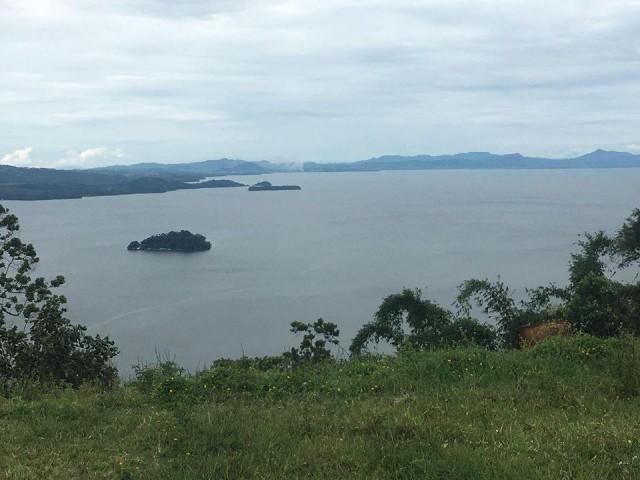
Lake Lanao was picture-perfect on this fine morning as seen from somewhere in the municipality of Binidayan, Lanao del Sur. Until you notice the white smoke somewhere near the middle. (Photo by Ivan Mayrina, GMA News)
I had to stop to snap a photo of Lake Lanao in all her majesty as seen from the municipality of Binidayan in Lanao del Sur.
Serene and abundant, the largest lake in Mindanao is picture-perfect, blemished only by the white smoke billowing from a spot near the center.
That spot is Marawi City, the heart of the province that is still being ravaged by war.
I was deployed to cover Marawi on Day 47 of the crisis that has still no clear end in sight.
The coverage was pretty much the same every single day. Like clockwork, bombs and bullets rain in the main battle area city as government troops inch closer to the enemy position.
Lives are lost, dreams shattered, and the city left in a state of devastation.
Movement for news coverage was limited as many parts of the city have been cordoned off and placed under military control.
It is a difficult place to be a journalist. One is so near yet so far to the action because of many restrictions.
The threat to personal safety is very real.

It takes days, sometimes weeks, of intense fighting before government troops can gain ground on the enemy forces. The Philippine flag flies proudly in this photo taken in barangay Marinaut after the troops overran an enemy position. (Photo from a military source)
War zone
There is no safe zone in the city.
An average of three stray bullets make their way to the provincial capitol building every day.
It is a scary thought not only because press conferences are held in the capitol.
Some 500 families have evacuated to a building inside the capitol compound. Many people still transact business with agencies holding office there daily.
Elsewhere in the city, movement is a risky affair with stray bullets sparing nothing and no one. It was hard not to feel vulnerable, vest and helmet notwithstanding.
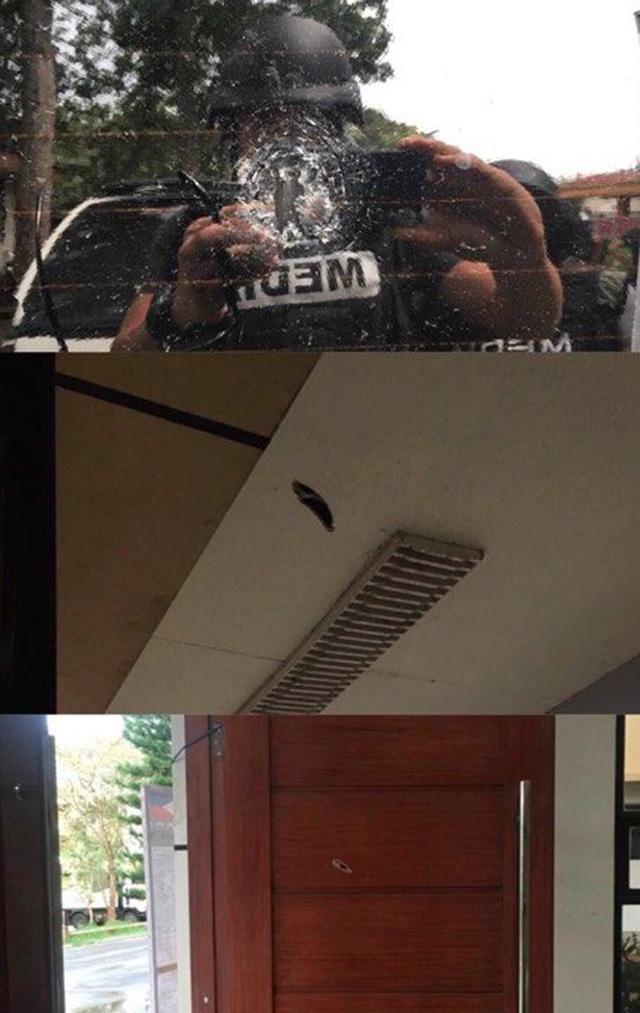
Top to bottom: The van of my colleague Maki Pulido was hit in the rear windshield while parked in the Marawi City Hall grounds. A bullet also found its way to the ceiling of the provincial capitol’s conference room. The main door of the capitol wasn’t spared as well. Hundreds of people enter and exit through this door every day, myself included. (Photos by Ivan Mayrina)
As I got to talk with the people who bear the brunt of the war, I realize how insignificant my fears were compared to what they are currently facing and what they will endure once the smoke clears.
The images of internally displaced persons, unarmed civilians trapped in the middle, left an imprint in my mind as a journalist and enriched my understanding of the war beyond the soldiers and the enemy, the bullets and the bombs.
Official government figures peg the number of internally displaced persons at 400,000.
However, the people we see in evacuation centers are only a small subset of this number. Around 90 percent are home-based or those who chose to stay with relatives or friends in areas within or surrounding the city.

I was greeted with a big smile from Ramil when I went to his community in Basak Malutlut in Marawi. I left him a promise that I will share his story. (Photo by Ivan Mayrina)
Ramil
Ramil Kapitan lives in barangay Basak Malutlut, where the fighting began on May 23.
Ramil chose to stay at home amid the fighting because his wife just gave birth. To him, an evacuation center is no place for an infant.
He is now out of work as a farmer but never out of his pleasant disposition.
Ramil's smile, however, merely masks the deep sadness, anger and frustration that grip him as the crisis drags on.
His family of 12 has survived out of what little relief goods they receive. They didn’t have much before this. They even have less now.
“Masakit talaga kasi lugar namin e. Wala kaming magagawa, nariyan na yan. Pero sa totoo lang, kapayapaan ang kailangan naming dito,” Kapitan said.
He said he prays to Allah for peace and a chance to get their lives back.
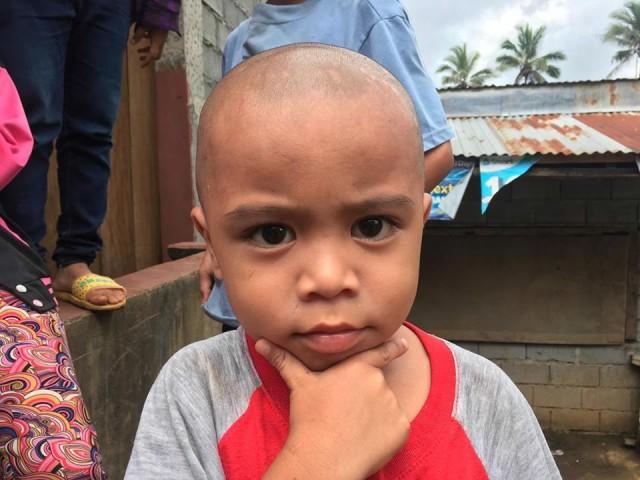
Buyog stood out as one the smarter kids in Basak Malutlut, Marawi. I asked him to smile for this photo, but he gave me a “Mr. Pogi” pose instead. (Photo by Ivan Mayrina)
Buyog
Some faces just call you out.
Five-year-old Buyog, also from Basak Malutlut, gamely posed for this photo after a snappy high-five with this stranger.
Oblivious to the war raging on in his hometown, his eyes spoke of trust, hope and innocence. But they also spoke of uncertainty.
Unlike Buyog, 11-year-old Muhamad Yasin Saripada does not have any doubt about the danger he is facing.
He said he was scared of the cacophony of bullets and bombs that has disrupted life at home in Barangay Datu Saber.
“Nalulungkot po kasi hindi na kami makapag-aral. Hindi na kami makalaro,” Muhamad said.
And as if on cue, the sound of intermittent gunshots reverberated in the background.
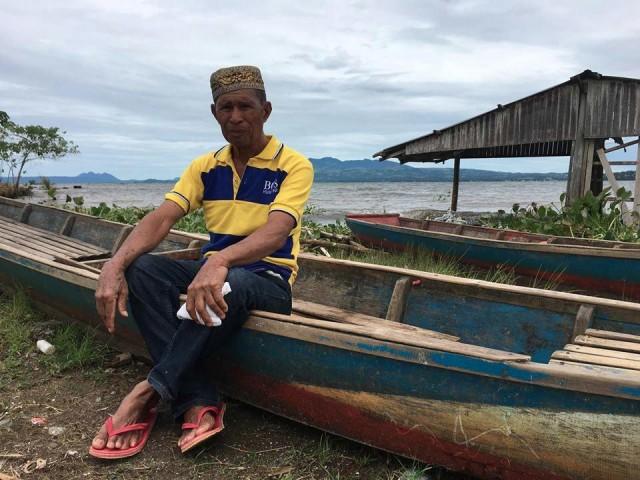
Datu Cabugatan
Datu Cabugatan is not from Marawi.
But even though the city is kilometers away from his home in the lakeshore municipality of Ditsaan Ramain, he also bears the pain of a war that is not of his own making.
In all his 65 years, Cabugatan and his family live out of his daily catch from Lake Lanao.
But the lake has become a battleground in itself, with Maute terrorists using it as an escape route. Naval forces have since prohibited fisher folk from plying their trade.
Cabugatan was full of anger and desperation.
“Sa amin yan! Bakit nila kami pagbabawalang mangisda? Paano kami mabubuhay? Mas mabuti patayin na lang nila kami,” he said.
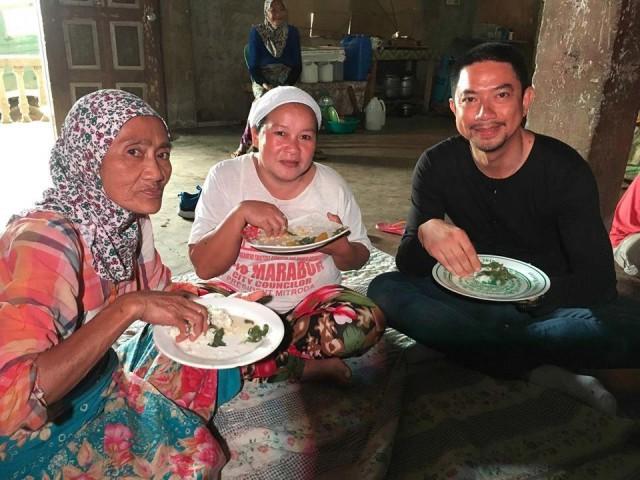
I went to this home in barangay Datu Saber looking for a story. I got that, and a free lunch from the Sabir family. (Photo by Ivan Mayrina)
Sabir family
In Datu Saber, I met the Sabir family of home-based IDPs.
Over the last two months, they have only received relief goods twice. For large families of more than 10 members, the goods lasted only a few days.
Thus, for almost every meal in too many days, they go to their backyard to harvest cassava leaves, banana pith and local scallions.
Talbos ng kamoteng kahoy was cooked in coconut milk, while ubod ng saging was made into kinilaw.
The scallions were mixed and crushed with ginger and chili peppers to make palapa, a staple in Maranao cuisine.
But they who have barely enough to survive each day, have so much to give.
The Sabirs graciously invited me to share in their meal. It wasn’t bad at all. But how could one eat those every day for two months?
“Talagang mahirap. Pero kahit ano kumakain na lang para mabuhay lang kami. Pero ito nakakasawa,” Binolawan Sabir told me.
I walked out of that home elated by big warm smiles from everyone. They say war brings out the worst in people and makes us witness the most unimaginable evil.
Not on that day. Not with those people. That day I saw that Filipino hospitality goes beyond religion and that war cannot decimate the good in man.
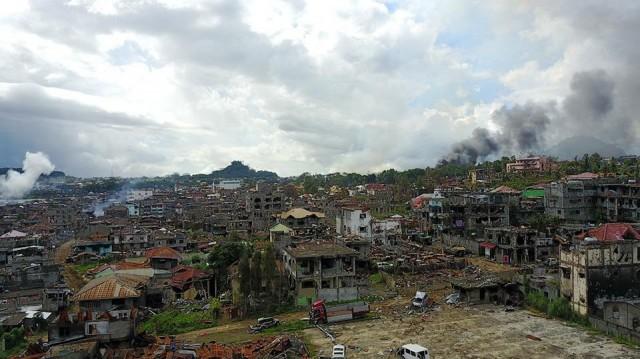
A view of Marawi from somewhere in Marinaut, one of three barangays where fighting still rages. (Photo by Ivan Mayrina)
Restive bakwits
But Marawi is in ruins. So are the lives of tens of thousands of people who lost loved ones and, in many cases, several generations’ worth of family wealth.
This war has been creating widows, orphans and a people less hopeful about their future.
In a room full of community elders, religious leaders and residents, the restiveness is palpable. The war may soon be won but for them, its impacts will linger on.
Mouhammad Camal Sharief, a local social worker, said that while the prevailing sentiment of the Maranaos is still anti-Maute, feelings of neglect, frustration and disillusionment are beginning to manifest.
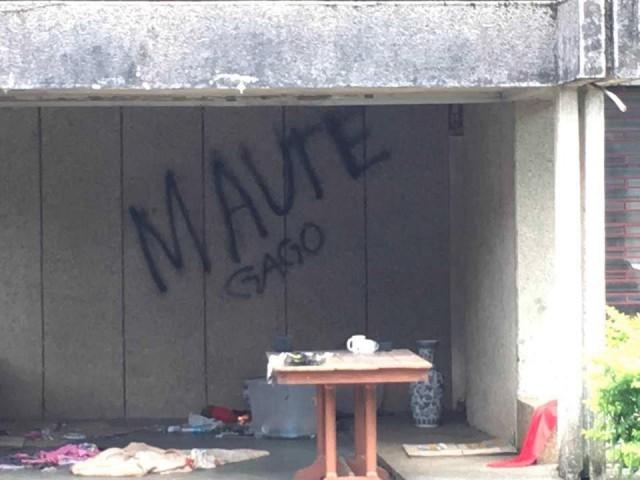
Expressions of anger toward the Mautes in the heavily damaged Mapandi area. (Photo by Ivan Mayrina)
“Problema namin sardinas. Problema namin cup noodles. Pero sa evacuation center may nakausap akong bata. Sabi niya, 'Ako si Mahdie (Maute). Pangarap kong maging Maute.’ The kid is 9 years old pero yun ang pangarap niya. May isang bata kumuha ng black shirt, nagsisigaw ng Alahu Akbar,” said Sharief.
During my downtime at an evacuation center I watched kids playing: not patintero or tumbang preso, but baril-barilan, with empty bottles of mineral water tied together and made to look like rifles.
Is this war providing yet another fertile ground that will sow the seeds of violent extremism?
Then I remembered little Buyog, and how his young mind sees all of this.
That is a war on another front that we as a nation would have to confront sooner or later. —NB/JST, GMA News



